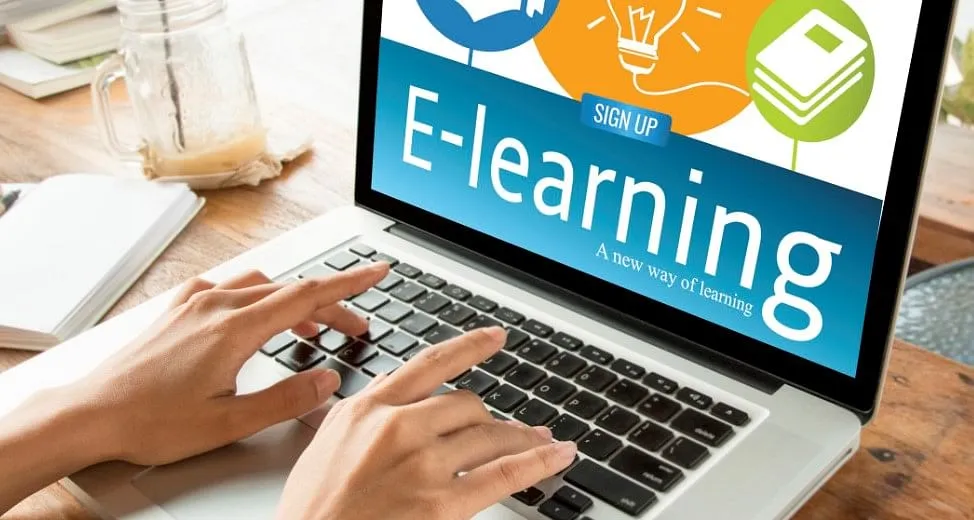For past almost two years, not only educational institutions but every other institution in the society has been badly affected. Among all the institutions, education, which is believed to create human beings with intelligence and make them face life with conflicts, complexities, miseries and inequalities, remained closed for a long time. As we all know closure of institutions means to keep the future of the nation in suspense. Every institution of society has taken suitable alternatives to run their businesses. Education system too opted for online learning and remote teaching as an alternative to counter the challenges which were posed by the Covid 19. Online teaching-learning fulfills the maximum requirements of the educational system if not all. In this global shutdown period e-learning has gained popularity but still a lot of educational institutions were unenthusiastic towards online teaching and learning phenomena. The challenges posed by the pandemic introduced each and every one to the sphere of e-learning. All stakeholders got indulged in remote teaching and learning via, Google Hangouts, Skype, Google Classroom, Webex Meet and other like platforms, though ZOOM and Google Meet emerged as a clear winner. These strong online tools and methods proved very strong as they rescued the entire education system from complete shutdown in the lockdown like hard times.
Online education played a vital role during the pandemic period, but at the same it remains in hot discussion throughout Covid period due to its strength, weakness, and opportunities and challenges (SWOC). Let me discuss briefly the SWOC matrix of online learning.
Strengths
Online learning is easy to access at any place and time, that means there is time flexibility and location flexibility. Students do not have any restriction of time and space. It has dexterity and geographical liberation which in turn gives the self-sufficiency to the learners to pursue education. Online learning provides customization of learning opportunities that suffice the need of students. Online learning caters to a wide range of audience at a time. It also provides access to all streams irrespective of circumstances with equal access and equal opportunities. In the online learning phenomenon there is wide availability of courses & content. We can access limitless resources with the help of Digital Libraries irrespective of location.
Weakness
Though online learning has a lot of fortes, at the same time it has few weaknesses in the teaching and learning process. Absence of real time tutor, lack of relationship and direct communication causes deleterious effects on academic enhancement and personal development of the students. It leads to complete isolation as the students wholly and solely depend on technology. Online learning is unsuitable for subjects which have practicalities and experimentations. Students fail to access unsupportive information in e-learning and at the same time students’ assessment and real-time feedback are limited in this mode of learning. It has been seen that online learning feeds the students with distractions, frustration, anxiety and confusion as the students were not habitual of this mode of learning.
Opportunities
During the Covid 19 period, every challenge has been taken as an opportunity by every institution of the society particularly by the education system. Academic institutions have translated the opportunity by making their teachers teach and students learn via online methodology as it saves time and provides opportunity for work-life balance. Lots of opportunities are created on successful combinations of education and technology during the Covid period and at the same time it improvises the learning capacity as well. Covid period brought out numerous and surprising innovations and digital developments. Already, EdTech companies tried their level best to assist the education system and not letting teaching and learning process to stop. Nation builders (teachers) practiced new technology and developed easy and flexible programs for their learners. Educators developed innovative pedagogical approaches in this panicky situation, now also termed as Panicgogy. EdTech Start-ups have plenty of opportunities to bring about radical transformations in nearly all the aspects of education ranging from, teaching, learning, evaluation, assessment, results, certification, degrees, and so on.
Challenges
Online learning faces many challenges and issues like learners’ issues, educators’ issues and content issues. The big challenges which the educators faced are a sudden shift from offline to online mode, changing their teaching methodologies, and managing their time. Online learning is entirely dependent on technological devices and weak internet connections sometimes denied access to online learning; this poses a big challenge for institutions teachers and students.
Lack of standards, quality control, development of e-resource, and e-content delivery are also other big challenges in online learning. Ensuring digital equity is also crucial particularly in the current tough time. All the education related stakeholders have not access to all digital devices, internet, and Wi-Fi which further increases the digital divide. Digital illiteracy is another challenge which creates a lot of hindrance in running the system smoothly.
Everyone had experience of this global event (Covid). However, the pandemic has forced global industries including academics to make radial adjustments in a short span of time. Keeping in view the lockdowns and consequences of Covid-19 every institution of society has tried their level best to translate challenges into opportunities. Education system too has taken the succor of online education as an alternative in order to run the system. The effects of virus upon education are not yet fully understood. Online learning has its own strengths of which the system has benefited unexpectedly; weakness on which the system has worked hard to eradicate or translate them into strengthens.






